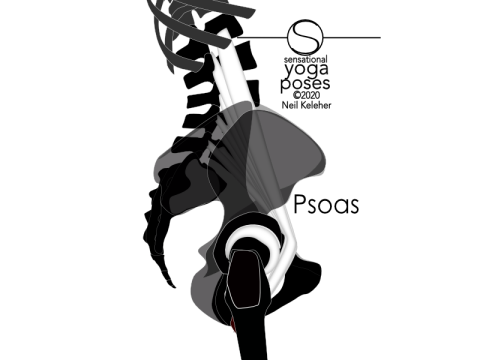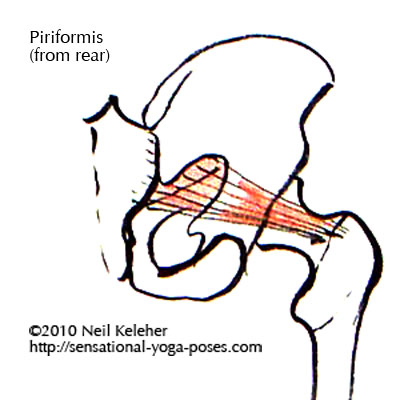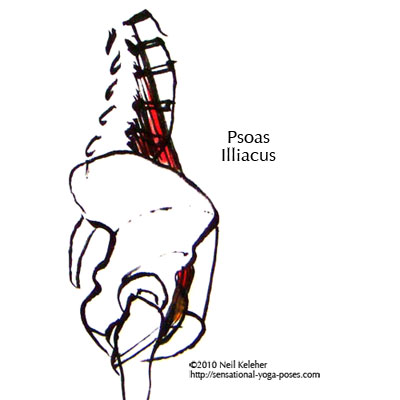Low Back Pain and Fallen Arches
On page cat links

I have low back pain and fallen arches. Are the two connected?
On page cat links

I have low back pain and fallen arches. Are the two connected?
Fallen arches (excessive pronation) result in the shins and thighs rolling inwards. People who have fallen arches tend to have knocked knees. And when I was a child my parents paid for braces to help straighten my legs. I still had fallen arches however.
Later on when, prior to enlisting in the army I learned how to lift my arches to hide what one doctor called "flat feet."
So how does fallen arches relate to low back pain?
Some anatomy is required.


The thigh and the front of the spine have two direct muscular connections. (If we counted the back of the spine there would be three.) The piriformis attaches to the front of the sacrum. It passes through the greater sciatic notch at the back of the pelvis to attach to the top of the thigh bone.
The psoas attaches to the front of the lumbar spine and the lowermost thoracic vertebrae.
It loops around the front of the pelvis to attach to inner aspect of the thigh at a protuberance called the lesser trochanter. The lesser trochanter sticks out towards the back of the thigh bone, just below the neck.
If the thigh bones are rolled inwards, because of pronated feet (fallen arches) the lesser trochanter moves backwards pulling the attachment of the psoas with it. The tension in the psoas then pulls forwards on the front of the lumbar spine.
This rotation may also add tension to the piriformis which in turn pulls forwards on the sacrum.
The leverage of the psoas, since it folds around the pelvis, is probably greater, and it is perhaps greatest on the lower lumbar vertebrae.
If you've got low back pain and fallen arches, and it feels like your lower back is being compressed from within the body this may be the cause.
The first step, or an important step is learning to fix fallen arches. You may not actually need arch supports. You can learn instead, as I did, how to activate your feet and ankles so that your arches are no longer fallen. Interestingly enough these same exercises rotate the shins and thighs outwards.
However, instead of coming from the muscles of the hips, you can learn to generate this action using the musculature of the feet and ankles.
The next step may (or may not) be learning to control and stabilize the knee joints. In some situations I find it handy to activate the knees. The single joint muscles of the knee can control rotation of the lower leg with respect to the thigh and vice versa.
The next step is where you get to work on releasing the low back.
One possible cause of residual back pain, even after fallen arches have been corrected, are hip muscles that aren't working properly. One of the best ways to train the hips (in my experience so far) is with balancing on one foot poses and exercises. These types of exercises can force awareness to the supporting leg hip and can be used to explore imbalances between the sides.
For learning how to activate the gluteus medius and other single joint muscles of the hip, check out the hip control guide. It's for anyone interested in deeper self exploration and self control of their body.
